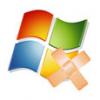
Spam Report: USA No Longer The World’s Most Obnoxious Nation
For the first time in recent memory, the United States is no longer among the world’s premier spam distributors. In fact, the US isn’t even in the top ten, according to a new report from Kaspersky Lab.













